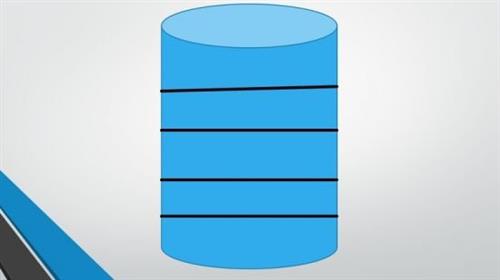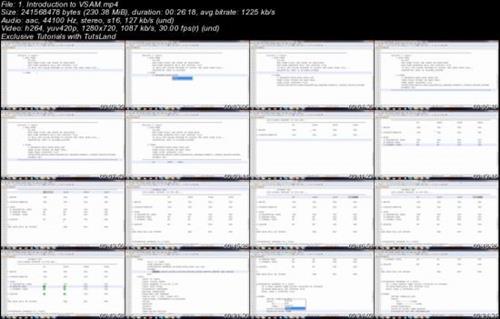Mainframe: Virtual Storage Access Method [VSAM]
KSDS ESDS RRDS LDS PS
Published 4/2024
MP4 | Video: h264, 1280x720 | Audio: AAC, 44.1 KHz, 2 Ch
Language: English | Duration: 2h 36m | Size: 1.6 GB
What you'll learn
What is VSAM?
Differences between KSDS, ESDS,RRDS and PS
How to create VSAM files using IDCAMS utility?
IDCAMS utility commands: DEFINE, REPRO, PRINT, DELETE, LISTCAT
Requirements
TSO/ISPF Module
JCL
Description
This course consist of
What is VSAM?
Cluster Definition
Differences between VSAM and NON-VSAM datasets
Differences between KSDS, ESDS, RRDS and LDS
What is Control Interval (CI) and Control Area (CA)
How to create KSDS, ESDS, RRDS files using IDCAMS utility
Explained different IDCAMS utility commands
DEFINE
REPRO
DELETE
LISTCAT
ALTER
File Manager tool
DITTO tool
This course is totally practical oriented hence you will get almost all concepts explanation on Mainframe Shop.
What is VSAM?
The term Virtual Storage Access Method (VSAM) applies to both a data set type and the access method used to manage various user data types.
As an access method, VSAM provides much more complex functions than other disk access methods. VSAM keeps disk records in a unique format that is not understandable by other access methods.
Different type of VSAM datasets
Key Sequence Data Set (KSDS)
This type is the most common use for VSAM. Each record has one or more key fields and a record can be retrieved (or inserted) by key value. This provides random access to data. Records are of variable length. IMS uses KDSDs.
Entry Sequence Data Set (ESDS)
This form of VSAM keeps records in sequential order. Records can be accessed sequentially. It is used by IMS, DB2, and z/OS UNIX.
Relative Record Data Set (RRDS)
This VSAM format allows retrieval of records by number; record 1, record 2, and so forth. This provides random access and assumes the application program has a way to derive the desired record numbers.
Linear Data Set (LDS)
This type is, in effect, a byte-stream data set and is the only form of a byte-stream data set in traditional z/OS files (as opposed to z/OS UNIX files). DB2 and a number of z/OS system functions use this format heavily, but it is rarely used by application programs.
Who this course is for
Who are interested to know more about VSAM
Homepage:
Kod:https://www.udemy.com/course/vsamvenkatsince2010/Screenshots
Download link
rapidgator.net:
nitroflare.com:Kod:https://rapidgator.net/file/e4405cc3f387fd6f83c542ec61c8d3d0/xgdrb.Mainframe.Virtual.Storage.Access.Method.VSAM.part1.rar.html https://rapidgator.net/file/81ffbbd60149a7a2375fedb19c88a10a/xgdrb.Mainframe.Virtual.Storage.Access.Method.VSAM.part2.rar.html
Kod:https://nitroflare.com/view/55CC51D48E0A565/xgdrb.Mainframe.Virtual.Storage.Access.Method.VSAM.part1.rar https://nitroflare.com/view/E66F38FB0CB082A/xgdrb.Mainframe.Virtual.Storage.Access.Method.VSAM.part2.rar
1 sonuçtan 1 ile 1 arası
-
06.04.2024 #1Üye



- Üyelik tarihi
- 20.08.2016
- Mesajlar
- 144.971
- Konular
- 0
- Bölümü
- Bilgisayar
- Cinsiyet
- Kadın
- Tecrübe Puanı
- 153
Mainframe Virtual Storage Access Method [VSAM]
Konu Bilgileri
Users Browsing this Thread
Şu an 1 kullanıcı var. (0 üye ve 1 konuk)



 LinkBack URL
LinkBack URL About LinkBacks
About LinkBacks






 Alıntı
Alıntı
Konuyu Favori Sayfanıza Ekleyin